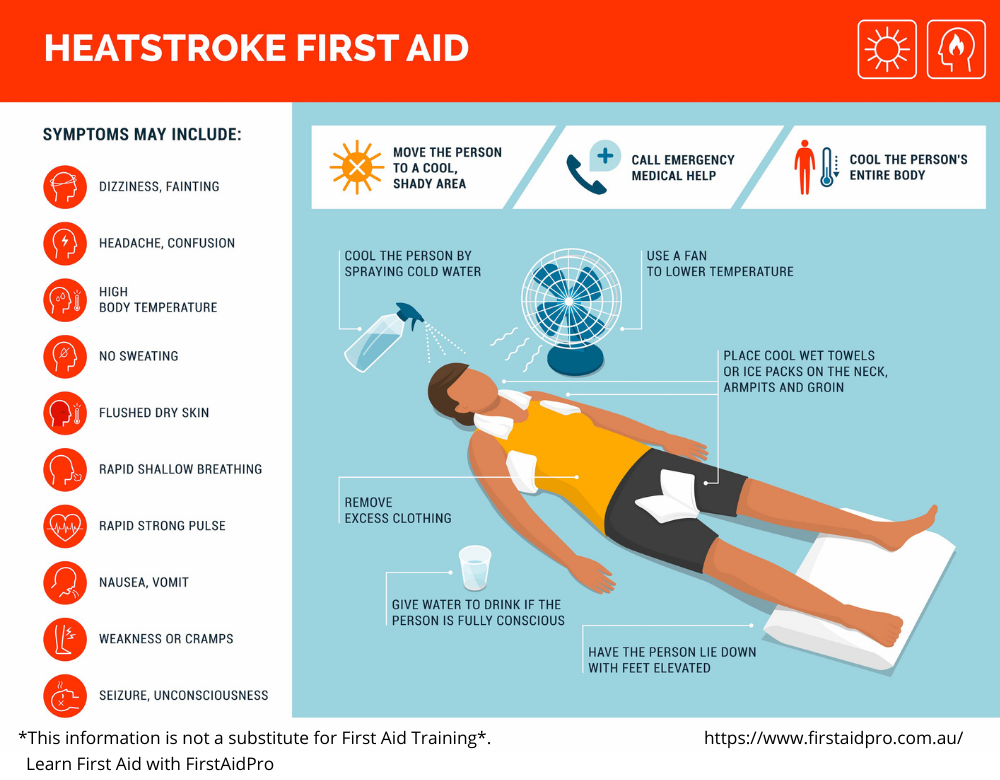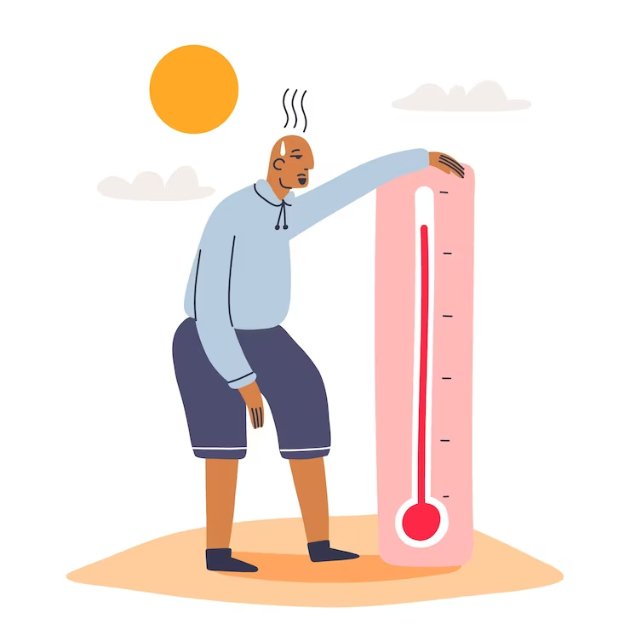Heat stroke is the most serious form of heat injury and is considered a medical emergency. If you suspect that someone has heat stroke — also known as sunstroke — call 911 immediately and give first aid until paramedics arrive.
Heat stroke can kill or cause damage to the brain and other internal organs. Although heat stroke mainly affects people over age 50, it also takes a toll on healthy young athletes.

Heat stroke often happens as a progression from milder heat-related illnesses such as heat cramps, heat syncope (fainting), and heat exhaustion. But it can strike even if you have no previous signs of heat injury.
Heat stroke results from prolonged exposure to high temperatures — usually in combination with dehydration — which leads to failure of the body’s temperature control system. The medical definition of heat stroke is a core body temperature greater than 104 F, with complications involving the central nervous system that occur after exposure to high temperatures. Other common symptoms include nausea, seizures, confusion, disorientation, and sometimes loss of consciousness or coma.
What Are Symptoms of Heat Stroke?

- Throbbing headache
- Dizziness and light-headedness
- Lack of sweating despite the heat
- Red, hot, and dry skin
- Muscle weakness or cramps
- Nausea and vomiting
- Rapid heartbeat, which may be either strong or weak
- Rapid, shallow breathing
- Behavioral changes such as confusion, disorientation, or staggering
- Seizures
- Unconsciousness
What First Aid Can Help Heat Stroke?
If you suspect that someone has a heat stroke, immediately call 911 or take the person to a hospital. Any delay seeking medical help can be fatal.
While waiting for the paramedics to arrive, initiate first aid. Move the person to an air-conditioned environment — or at least a cool, shady area — and remove any unnecessary clothing.
If possible, take the person’s core body temperature and initiate first aid to cool it to 101 to 102 F. (If no thermometers are available, don’t hesitate to initiate first aid.)

Try these cooling strategies:
- Fan air over the patient while wetting their skin with water from a sponge or garden hose.
- Apply ice packs to the patient’s armpits, groin, neck, and back. Because these areas are rich with blood vessels close to the skin, cooling them may reduce body temperature.
- Immerse the patient in a shower or tub of cool water.
- If the person is young and healthy and suffered heat stroke while exercising vigorously — what’s known as exertional heat stroke — you can use an ice bath to help cool the body.
Do not use ice for older patients, young children, patients with chronic illness, or anyone whose heat stroke occurred without vigorous exercise. Doing so can be dangerous.
If emergency response is delayed, call the hospital emergency room for additional instructions.
Workers at the hospital will rehydrate the person and replace electrolytes through an IV.
How Can Heal Stroke Be Prevented?
When the heat index is high, it’s best to stay in an air-conditioned environment. If you must go outdoors, you can prevent heat stroke by taking these steps:

- Wear lightweight, light-colored, loose-fitting clothing, and a wide-brimmed hat.
- Use sunscreen with a sun protection factor (SPF) of 30 or more.
- Drink extra fluids. To prevent dehydration, it’s generally recommended to drink at least eight glasses of water, fruit juice, or vegetable juice per day. Because heat-related illness also can result from salt depletion, it may be advisable to substitute an electrolyte-rich sports drink for water during periods of extreme heat and humidity.
- Take additional precautions when exercising or working outdoors. The general recommendation is to drink 24 ounces of fluid two hours before exercise, and consider adding another 8 ounces of water or sports drink right before exercise. During exercise, you should consume another 8 ounces of water every 20 minutes, even if you don’t feel thirsty.
- Reschedule or cancel outdoor activity. If possible, shift your time outdoors to the coolest times of the day, either early morning or after sunset.